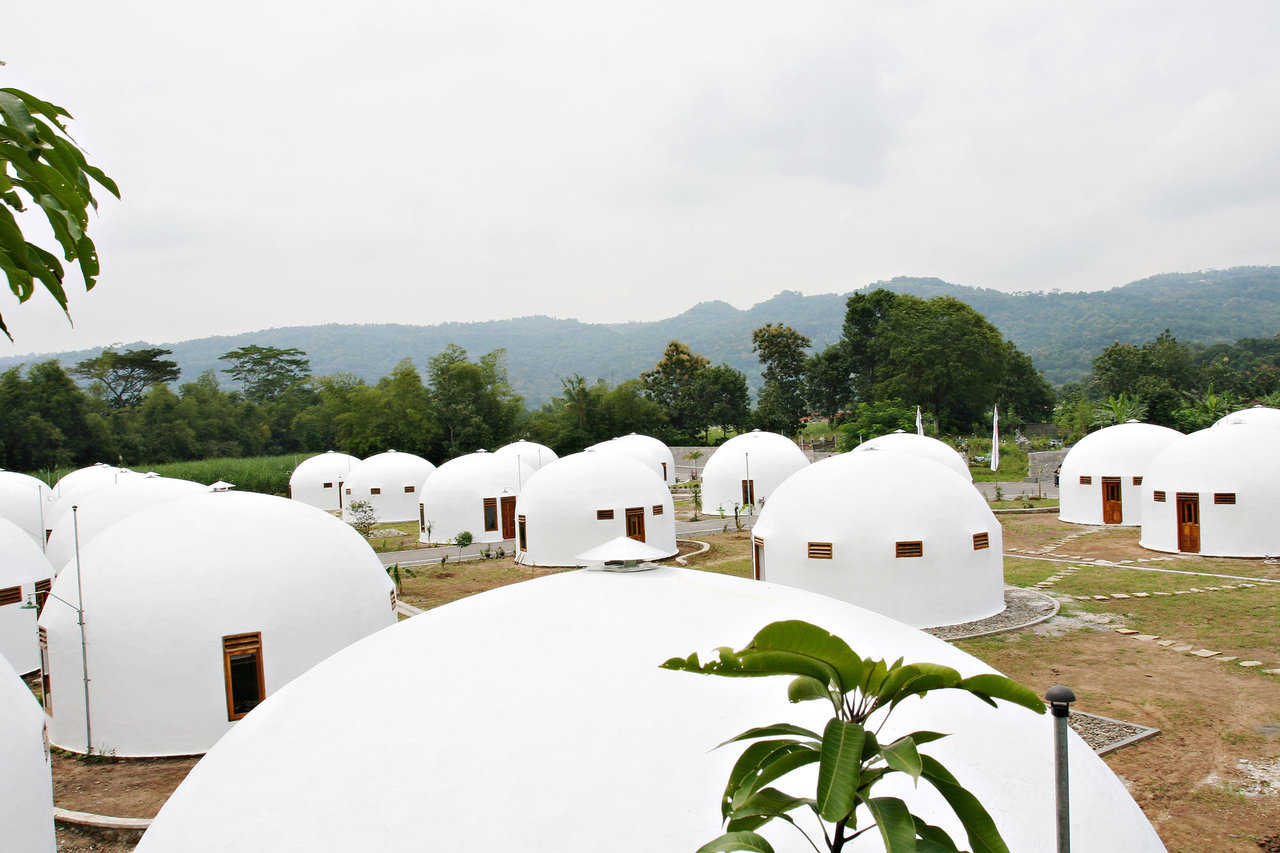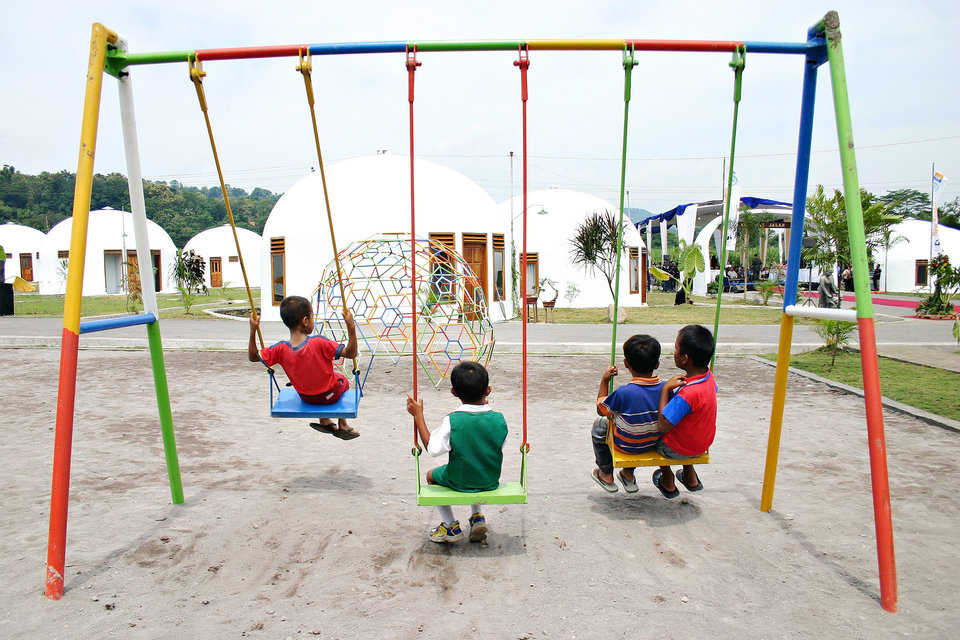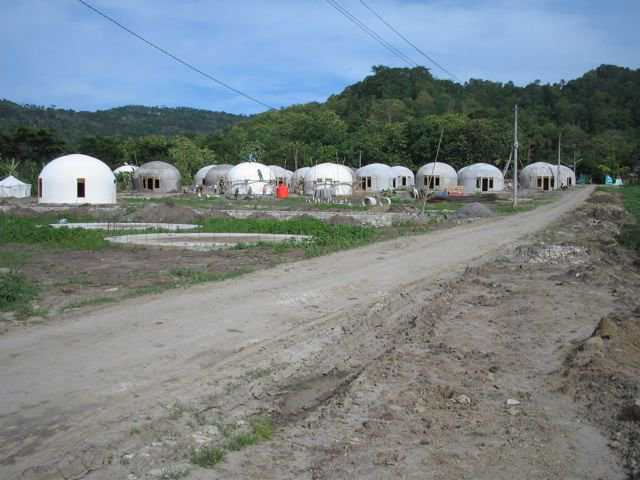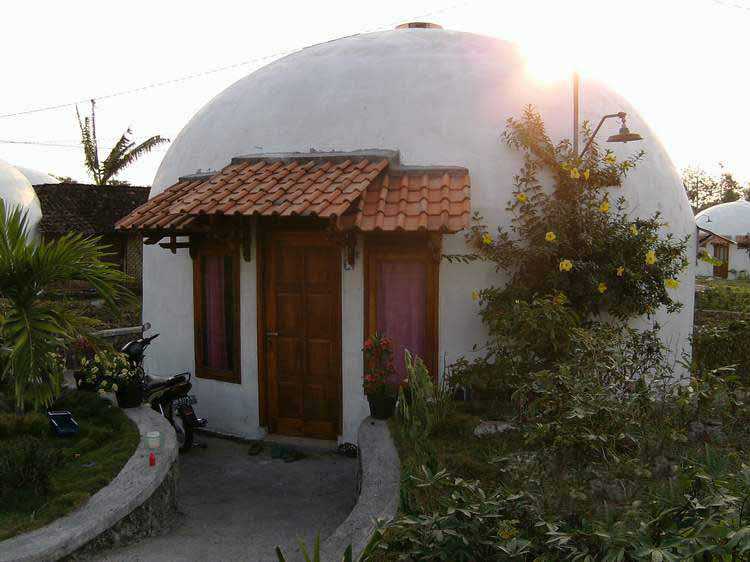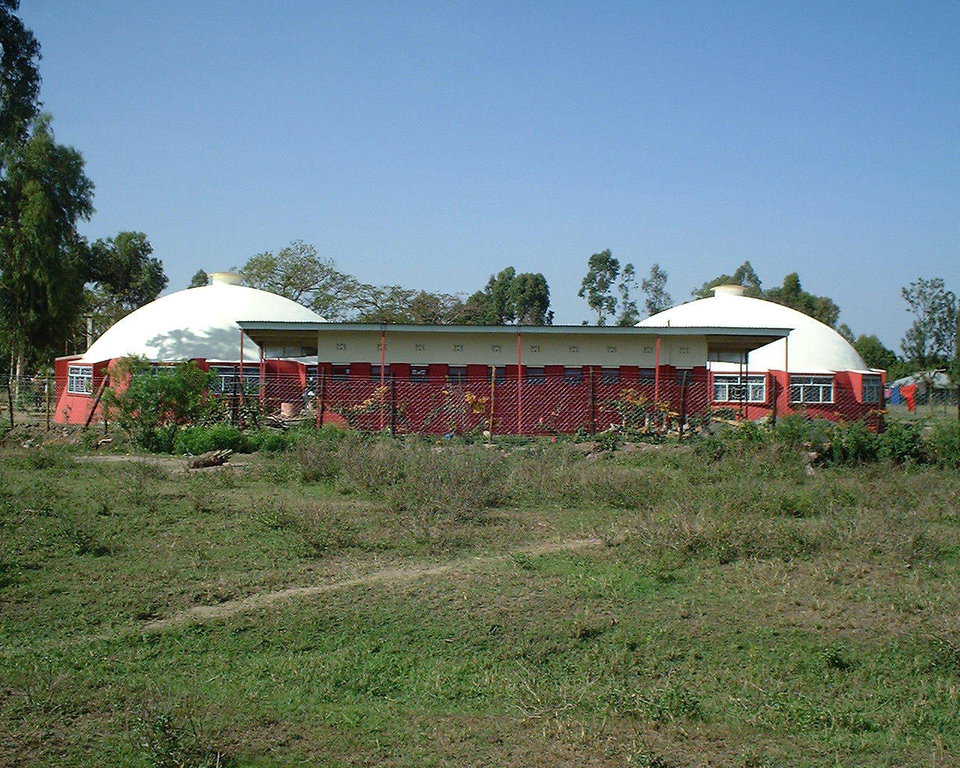Mission Statement
The Domes For The World Foundation’s mission is to improve the lives of people worldwide through the introduction and construction of EcoShells and Monolithic Domes for housing and community facilities. DFTW initiates and coordinates efforts to alleviate the destitute existence of people in struggling cultures and impoverished lands. To do this, we seek grants and donations to fund construction of permanent, affordable, sanitary and safe structures. We stimulate the economy of a project site by training natives in our construction methods and providing employment, and by using local materials whenever we can.
Haiti
Even before that devastating earthquake of January 12, 2010 hit Haiti, DFTW was working with local government officials and other organizations to improve the extreme poverty conditions in Haiti. Since the earthquake, DFTW has intensified its efforts.
Soon after the earthquake, DFTW teamed with internationally known hip-hop artist, Won-G and Globus Relief to create a new identity for Haiti. Then in December 2010, Andrew J. South, president of DFTW, completed negotiations for a partnership between DFTW, MODDHA and ESPWA.
MODDHA is an international NGO foundation dedicated to helping orphans and widows worldwide. ESPWA is the Creole name for Orphanage Project Hope, an orphanage in Haiti’s Southern Region that was completely destroyed and that DFTW will help to rebuild.
The aftermath of the earthquake has affected the entire country. Apart from the hundreds of thousands killed and wounded, Haiti’s capital was devastated which disrupted critical infrastructure and leadership. Government of the country prior to the earthquake was largely inefficient and even ineffective, which when compounded by the disaster led to greater chaos.
Power, fresh water, and waste stream management are the most apparent disruptions. While these services are operating, they are well below the country’s needs. Food and other consumable goods are being shipped in from the land border of the Dominican Republic at a seemingly inordinate premium to the Haitian people. Many areas do have some clean fresh water, and the UN is distributing individual packets of purified water throughout the area.
USAID estimated number of displaced individuals in Haiti is 2 million. The temporary shelters donated and erected are in clusters of a few dozens to thousands. There are 1,200 of these “tent cities” and while they do keep some level of the elements off their occupants, they also create extremely hot spaces during the daylight hours which is a particular problem for infants and small children. The estimated number of people living in these settlements is 1.6 million.
Living in the poorest country of the Western Hemisphere, they had little to begin with. Subsistence farming and rudimentary micro retailing fill the day’s activities.
The UN is present in large numbers, but their efforts are little more than peace keeping by an overwhelming force that mostly stifles and prevents problems. The small NGO (non-governmental organizations) are the ones that are really making a difference. Each works with autonomy and addresses needs where they are found based on that NGO’s specialties.
The earthquake was disastrous to the country and the people are living their lives amid the rubble and failing infrastructure. Conditions in the tent cities are growing disastrous as the months go by. Small NGO’s are helping out while the rest of the larger international community is hopefully assisting the government get back on its feet, and preparing to help the country’s infrastructure be better than it was before the earthquake.
The Need
In areas such as Haiti and much of the Caribbean, Latin America, the Union of South Africa, Korea, Ghana, Philippines and others, the need for low-cost housing is staggering. Reported housing shortages range from 500,000 to 1,000,000. Can you imagine the effort it takes to initiate a project for 1,000, 10,000 or 100,000 units? Example: Building 25,000 homes in a timely manner, with a goal of 20 completed units per day, for 250 days per year, requires 5 years.
The logistics are enormous and the financing presents another problem. In many areas, families must maintain themselves with an annual income that wouldn’t pay an average dry-cleaning bill. Fire is also a danger, and fire protection usually is limited. Other hazards impinging on quality housing include earthquakes, hurricanes, rot and decay.
Our Solution
The UN has set guidelines for what they deem to be adequate housing. DFTW has built a prototype home at Monolithic’s headquarters that meets their requirements. It is an EcoShell, a simple, 28-square-meter (314 square feet) house that utilizes approximately $1000 worth of basic material. Made of steel-reinforced concrete, this EcoShell dome has a diameter of 6 meters (20 feet) and a height of 3 meters (10 feet). It has openings for a door and window in front and two small windows in the rear.
Cost
For this example, we are assuming there is some sort of existing infrastructure near the building site. The cost of extending simple roads, simple water, simple sewage with sewage treatment, including land costs will run approximately $2000 per unit. We add $1000 per unit for the raw cost of the structure. That includes the Airforms. Since we expect to build one hundred homes using one Airform, the project will require ten Airforms at $3,000 each. To that, we add $2000 for interior finish, appliances, basic equipment and general overhead. A thousand units, therefore, will cost around $5 million.
Construction Details
Before construction of homes commences, a crew builds the infrastructure. Then the foundations and floors are built; followed by a crew to inflate the Airforms and apply the reinforcing steel; followed by a crew to apply the concrete; followed by a crew to finish the doors, windows, and exterior coatings; followed by a crew to finish the structures.
If five homes are started per day and if work proceeds without interruption, 1,500 families have superior homes in 300 days. If we allow one-third of the time for interruptions, a 1000-dome project, at three homes per day, takes about a year.
Training
Results include trained personnel able to continue constructing and training even more workers. Monolithic does not give exclusive rights to its technology to any individual or entity. This technology is for everyone who desires to learn it. The same techniques utilized to construct the housing units can be employed to build bridges and culverts.
Sustainability and the Future
Sustainable buildings, according to the U.S. Green Building Council, save energy, water and materials; preserve the local surroundings; assure the health of their occupants; and require little maintenance.
Dr. Perry Gray-Reneberg, with the California Redwood Company, said, “Monolithic Domes and EcoShells inherently resist the wasting of more precious resources in that they sustain human life and protect our considerable investment of time. We work to build, commune with nature and one another, and thrive as a culture and society. If our structures are no sanctuary from stray bullets, indiscriminate winds, devouring insects, or raging fires, then they are not sustaining. EcoShells and Monolithic Domes demand our labor once to assure the security of ten generations to follow. Building for the future involves community-wide effort to educate public servants and economic leaders with what our grandchildren will have as common sense: Monolithic Domes and EcoShells sustain all communities of Earth.”
Please Help!
Technology has shrunk our world to the extent that we can no longer ignore the plight of our neighbors and has given us the means by which we can take care of each other better. We must do that. There is really no other option.
Many of the world’s housing problems are solved by utilizing EcoShells and Monolithic Domes. Grants, sponsors, endorsements, spokespersons and/or endowments must be found to make that dream a reality. You can help today with an online donation that is tax deductible, since DFTW is a nonprofit foundation. Every dollar helps.
